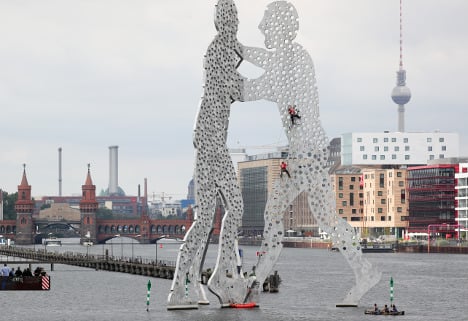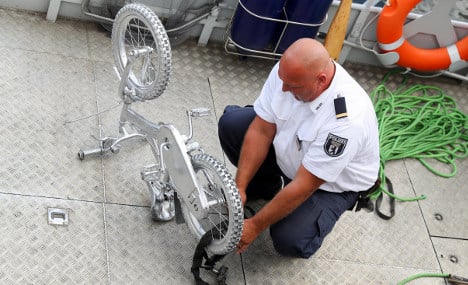A rescue team of expert climbers were called in to solve a very peculiar predicament on Tuesday – though perhaps less surprising given that it happened in Berlin.
A bicycle had somehow found its way more than halfway up the 30-metre high (100 feet) Molecule Man statue, dangling above the River Spree where the structure stands.
 Professional climbers rescue the bike. Photo: DPA.
Professional climbers rescue the bike. Photo: DPA.
It took the climbers about an hour and a half to take a small boat into the river and then scale the aluminium sculpture to detach a wheel and bring the bicycle down.
But it still remains a mystery as to how the bike got there in the first place – or even why it was placed there.
It could possibly be some form of artwork in and of itself, as similar bicycles have recently been found in other unexpected places, like on a traffic light pole and on the facade of a building, according to broadcaster RBB.
 The 'rescued' bike. Photo: DPA.
The 'rescued' bike. Photo: DPA.
Berlin’s Molecule Man was designed by American artist Jonathan Borofsky and depicts three people seemingly leaning towards each other, their bodies filled with countless holes.
The first Molecule Man sculptures were created in Los Angeles by Borofsky.
“This hundred-foot tall aluminium sculpture composed of three figures meeting in the centre, not only refers to the lightness inside our own solid bodies, but also the figures joining in the centre, refer to the molecules of all human beings coming together to create our existence,” the artist writes on his website.
“This symbolism is especially poignant for this 100-foot Molecule Man on the Spree River in Berlin since the river marked the division between East and West Berlin.”



 Please whitelist us to continue reading.
Please whitelist us to continue reading.
Member comments